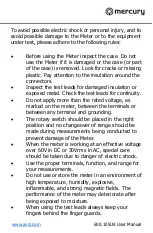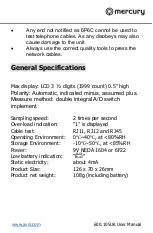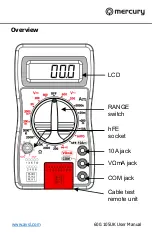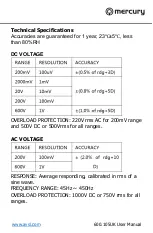
•
Disconnect circuit power and discharge all
high-voltage capacitors before testing resistance,
continuity, diodes or hFE.
•
Replace the battery as soon as the battery
indicator
appears. With a low battery, the
meter may produce false readings that can lead to
electric shock and personal injury.
•
Remove the connection between the testing leads
and the circuit being tested and turn the meter
power off before opening the meter case.
•
The internal circuit of the meter should not be
altered at will to avoid damage of the meter and
accidents.
•
A soft cloth and mild detergent should be used to
clean the surface of the meter on a regular basis.
No abrasives or solvents should be used to prevent
the surface of the meter from corrosion, damage
and accidents.
•
The meter is suitable for indoor use only.
•
Turn the meter power off when it is not in use and
take out the battery when you are not using for a
long period of time. Check the battery on a regular
basis as it may leak when it has been out of use
and replace as soon as any leaks appear to
prevent damage to the meter.
•
The cable tester should not be used on any
electrified product.
•
Do not use the cable tester on any network cable
where the copper wire connectors are not fully
pressed to avoid damage to the unit.





























